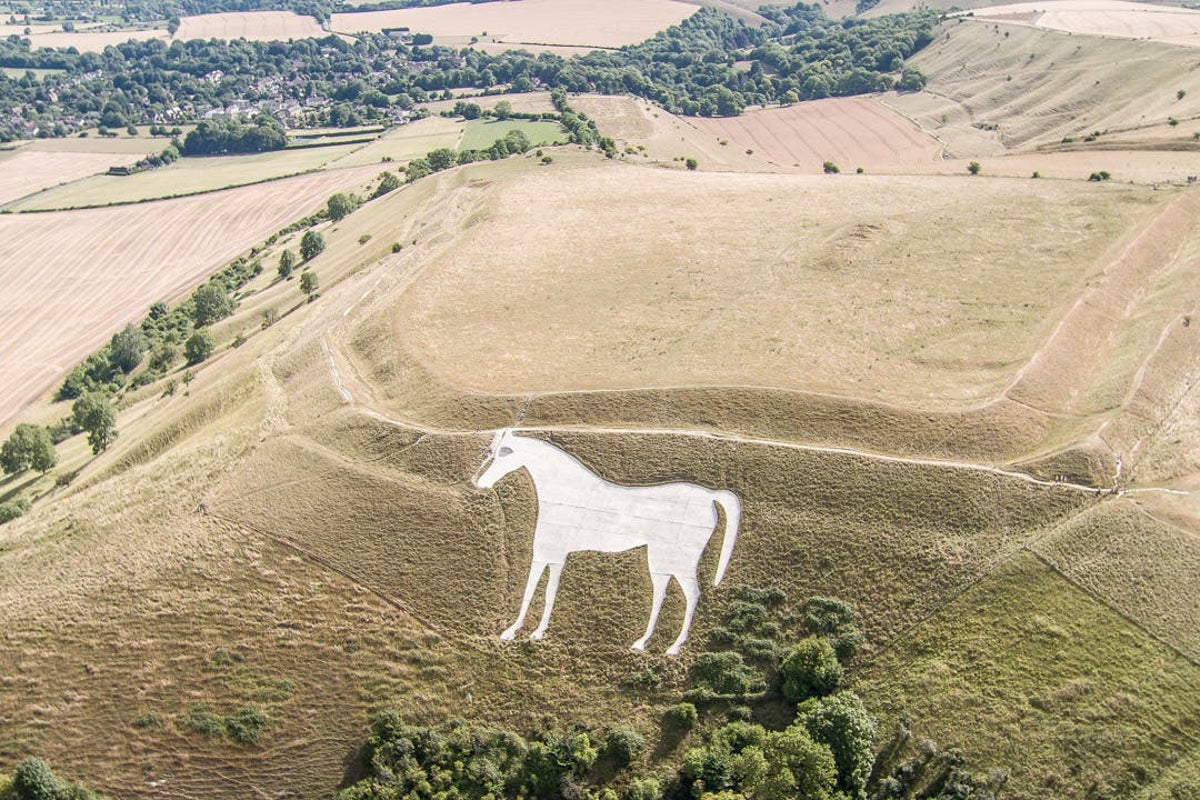
Police have begun an investigation after red fabric forming a St George’s Cross was pinned across a white horse carved into the hillside hundreds of years ago.
The fabric was attached to the Westbury White Horse, which is around 180ft high and can be visible for miles, on September 9.
English Heritage removed the installation later that day and assessed the pegs used as having caused “minimal damage” to the landmark.
Wiltshire Police initially said the incident was not being investigated as no criminal offences were thought to have been committed.
However, on Tuesday a police spokesman confirmed that an investigation had begun.
He said: “Following an assessment of the Westbury White Horse by English Heritage, we have received a report regarding minor damage being done to the horse through the use of pegs.
“We are in the early stages of our inquiries.”
The white horse was carved into the chalk grassland below an Iron Age hillfort at Bratton Camp in Wiltshire.
Local records suggest the horse originally appeared in the late 1600s, probably to commemorate the supposed Battle of Ethandun which is thought to have taken place at Bratton Camp in 878 AD.
The reason the St George’s Cross was pinned to the horse is unclear.
However, there had been widespread flying of Union and St George’s Cross flags across the UK following an online campaign.
Some people celebrated the campaign, while others claimed the increased number of flags was a result of xenophobia or racism.
The horse originally had to be scoured to keep it white, with the last recorded scouring taking place in 1853.
In the 1950s, it was covered in white-painted concrete but this turned grey and was replaced in 1993.
English Heritage researched methods for cleaning the horse, with a specialist steam cleaning system first used in 2006.
The system creates a clean surface, which environmentally friendly white paint can then be applied to.
There have been further cleaning and repainting rounds in 2011, 2016 and 2018.
In 2023, an extensive clean and repair work took place.
This involved a conservation team abseiling down the near-vertical face of the horse.
